Should you Use Different Wine Tasting Glasses for Different Wine Styles?
Specialty wine tasting glasses have proliferated over the past 20 years. Famous glass manufacturers such as Riedel or Spiegelau have put significant research efforts to design glasses enabling the wine tasters to capture all the aromatic subtleties and nuances of varietal wines or wines from specific wine regions.
If you are beginning your wine journey, this whole business of "one glass for one varietal wine" is definitely overwhelming, intimidating, and expensive.
Would you say the more wine styles, the bigger my wine glass cabinet ? Not necessarily!
What is the standard for a wine tasting glass?
ISO, the International body for Standardization, defines a wine tasting glass as :
“The tasting glass consists of a cup (an "elongated egg") supported by a stem resting on a base. The opening of the cup is narrower than the convex part so as to concentrate the bouquet.” [ISO 3591:1977, Sensory analysis -- Apparatus -- Wine-tasting glass]
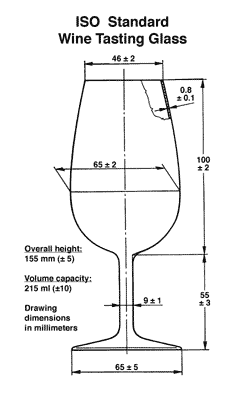
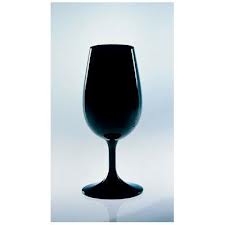
The ISO glass schematic on the left provides the recommended physical standards. The ISO definition does not state that the glass has to be clear, since colored tasting glasses. can also be found.
As a sensory scientist, I like to use black ISO glasses (right) for all the aroma and flavor evaluations, moving back to a clear glass for evaluating the color and appearance under daylight lightening if possible and against a white background (mandatory).
Masking the wine appearance using colored glassware prevents the tasters to be influenced by the color or transparency of the wine, in other words prevents the expectation and stimulus errors known to affect our perceptions.
Impact of the wine tasting glass shape on wine perceptions:
What does the science say?
Few studies have been conducted by sensory colleagues to assess the effect of the size and shape of wine tasting glasses on perceptions.
While the methodology varied among studies, their conclusions do not show outrageous effect of the size and shape on perceptions. The larger the cuppa, the larger the wine volume you need to have perceptions as intense as for a 1 oz/30 ml wine in an ISO wine tasting glass (add on the tasting expense!).
If you often conduct analytical tasting or if you write wine reviews for a living, it is critical to have consistency in the type of glass you are using in wine flights. The ISO glass does a great job of allowing to swirl the wine to free its volatile compounds, has a large enough aperture to allow smelling and sipping comfortably. In addition, it is affordable and widely available. I probably have 50 at home from various wine events I attended.
NOTE: Specialty glassware may add an element of enjoyment to the overall tasting experience for those wine tasters looking for a particular decorum and a sense of sophistication. Some consumers like to buy a lot of gadgets for their cars, others collect shoes and purses, so there is nothing wrong to take pleasure in purchasing and using wine accessories.
Scientific studies on the effect of glassware on perceptions: short summary
Margaret Cliff in 2001 conducted a study on the effect of three glass shapes on perceived aroma intensities. Her conclusions were: "Total intensities were highest in the Burgundy glasses and least in the Chardonnay glasses. Total intensities were highly correlated with the cuppa-diameter to cuppa-opening ratio, for the red (r = 0.99) and white (r = 0.89) wines. Wine colour intensity was highly correlated with maximum diameter, height and volume of the glasses. This research supports the use of the ISO glass for the evaluation of a broad spectrum of wines."
Hummel et al. in 2003 published a study comparing perceived intensity, liking scores and aesthetic impression of four wine tasting glass shapes and sizes. Findings showed different in perceived intensities as shown on the graph, where the shape closer to the ISO shape gave higher perceived intensities.
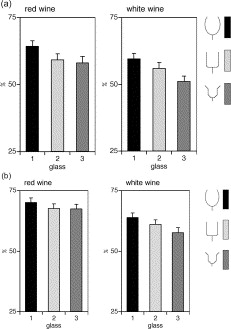
Figure legend: Odor intensity ratings of wines sampled before (a) and after (b) drinking (means, SEM, red wine, n=89; white wine, n=92). Highest intensity ratings were found after presentation of the odors in bulbous glasses; red wines produced higher intensity ratings compared to white wines. As a rule, wines were perceived to be more intense after drinking.
Delwiche and Pelchat, 2002 did a very thorough study comparing four glass shapes on aromatic perceptions. The tasters were blind-folded and didn’t know the purpose of the experiment. Differences in perceptions of aromatic attributes were noted but were described as subtle by the authors.
Russell et al. 2005 conducted a study to determine the effect of glass shape on perceptions of phenolics, these compounds imparting astringency, bitterness and giving some “structure” to wines. The hypothesis was that a large opening would facilitate oxidation of these compounds and therefore decrease the perceptions of astringency and bitterness. Again some slight differences were noted, but were “not profound enough” to affect the sensory qualities of the wines.
Special wine tasting glasses or not? This is your choice!
There is no harm in indulging in beautiful glasses while there is no harm in using basic ISO glasses for a great wine tasting experience.
Below are some suggestions found on Amazon.
Home > Wine Tasting Kit > Wine Tasting Glass
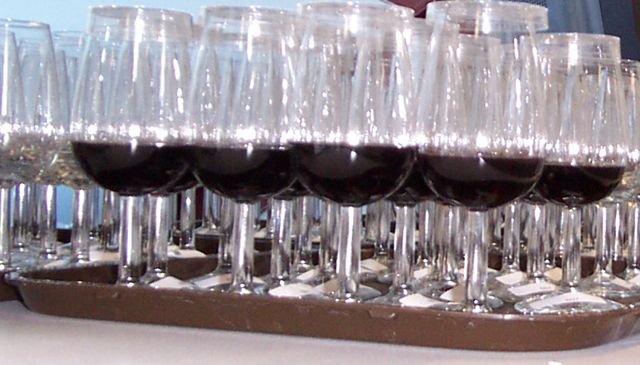


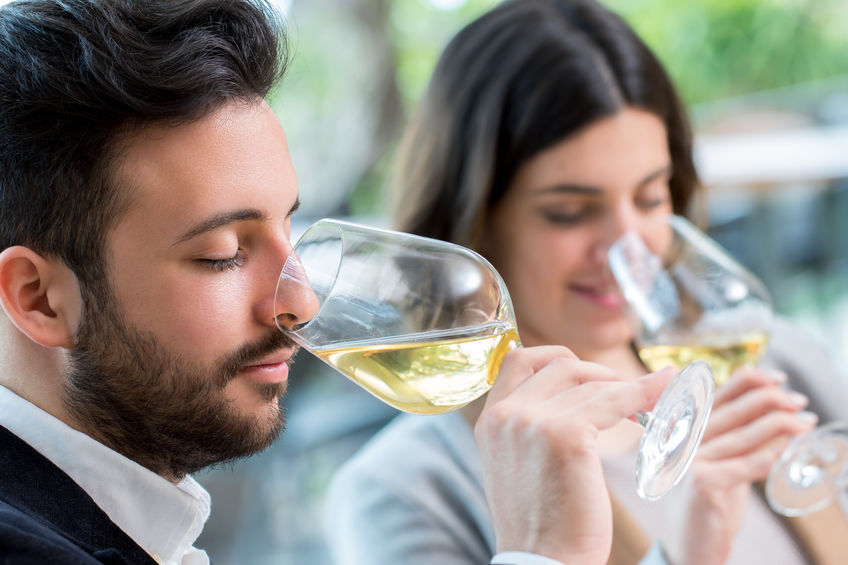

New! Comments
Have your say about what you just read! Leave me a comment in the box below.